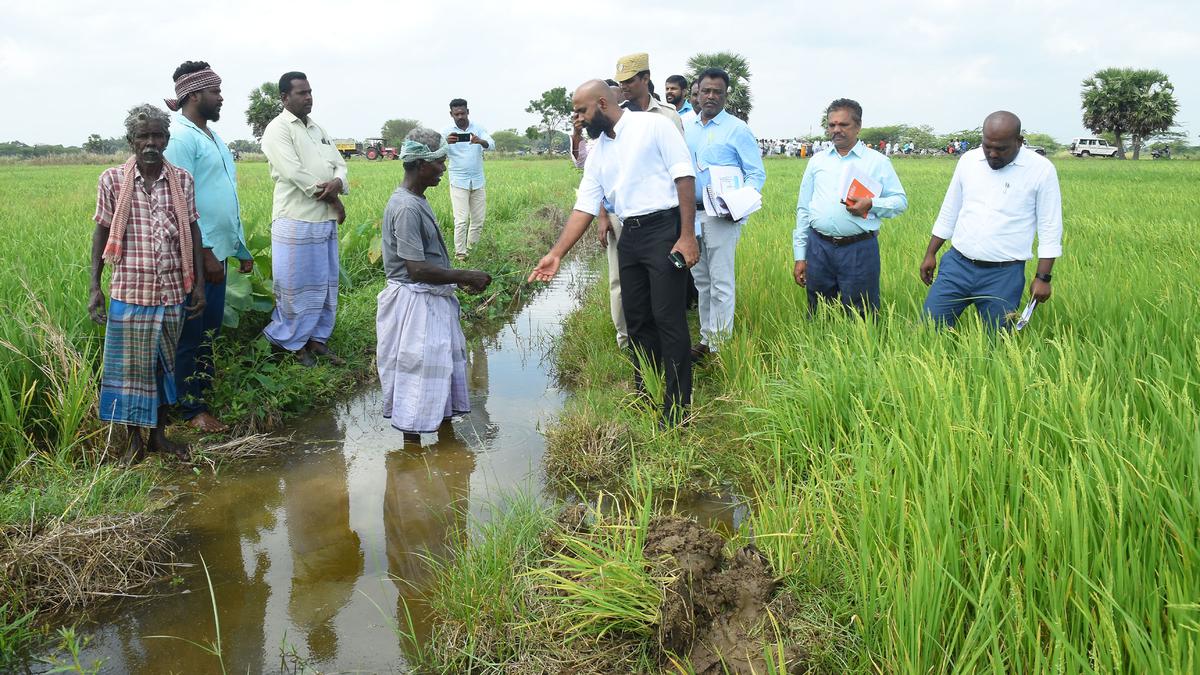
Mettur water flows to tail-end areas in delta region
The Hindu
Water released from Mettur Reservoir reaches Nagapattinam district, saving late samba crop; harvest expected in 20 days.
+
The water released from Mettur Reservoir to provide a much-needed wetting for the late samba crop in the delta region has reached fields in tail-end areas of Nagapattinam district, much to the relief of farmers who were worried over the fate of the crop.
Many farmers in the district went in for a late samba crop with the help of monsoon showers after water release from Mettur Dam was stopped on October 10 last year in view of poor storage. But as the crops started withering, farmers in the delta started demanding release of water to save the crop.
Based on their requests, Chief Minister M.K. Stalin ordered the release of two tmc ft (thousand million cubic feet) of water from the dam from February 3. Initially, the water discharge stood at 6,600 cusecs and gradually reduced to 5,600 cusecs and 4,600 cusecs. The Chief Minister subsequently extended the water release from Mettur Dam until February 10 to ensure that the water reached the tail-end areas.
The official machinery was geared up to ensure this. Additional Chief Secretary of the Water Resource Department Sandeep Saxena made an inspection of water flow right from Mettur to the delta region.
According to sources in the Agriculture Department in Nagapattinam, district-level teams were formed to coordinate and monitor the water flow. Five Joint Directors of Agriculture were deputed to monitor the water flow and requirements along with WRD and Revenue officials in Nagapattinam district alone.
“We have been in the field over the past few days and monitoring the situation closely. We have been coordinating with the WRD officials to ensure supply to all areas. We are making sure that supply is cut off once adequate water flowed to fields in a particular area and the water is diverted to other places where it is required,” said an official in the district.

The Karnataka government has drafted a comprehensive master plan for the integrated development of Kukke Subrahmanya temple, the State’s highest revenue-generating temple managed by the Hindu Religious Institutions and Charitable Endowments Department. The redevelopment initiative is estimated to cost around ₹254 crore and aims to enhance infrastructure and facilities for devotees.












